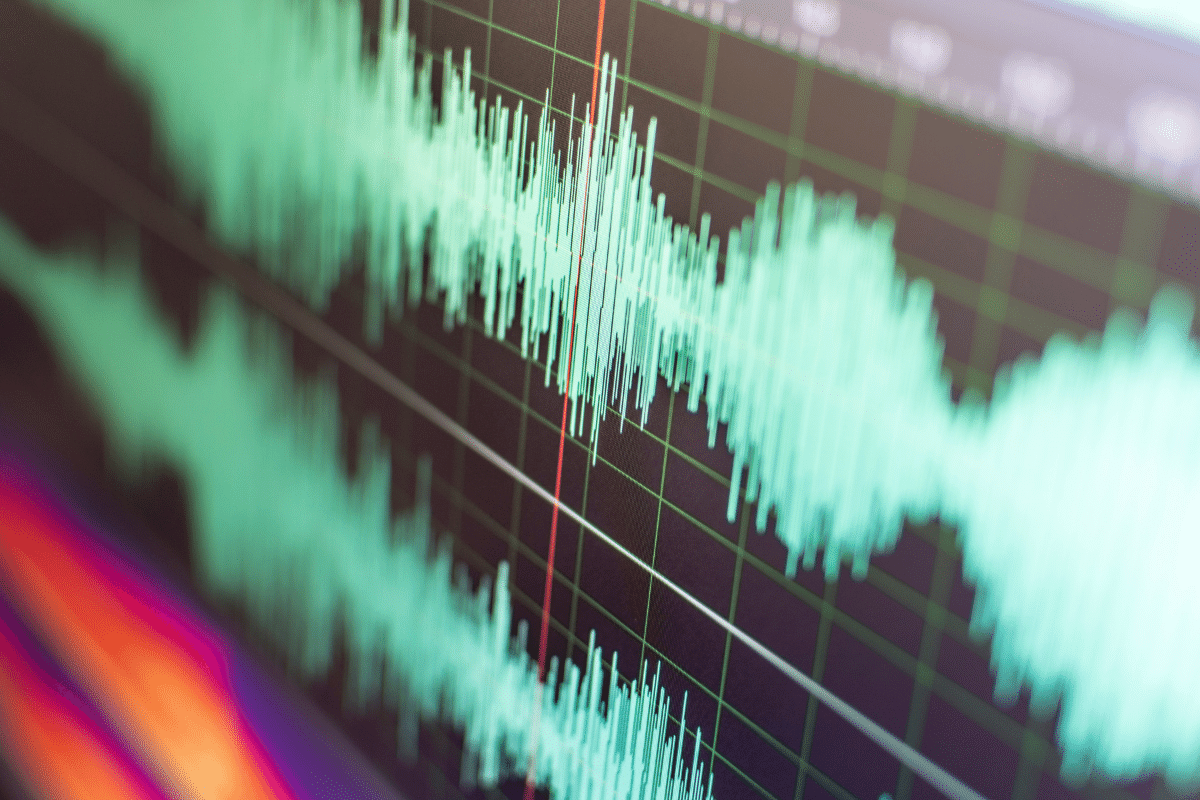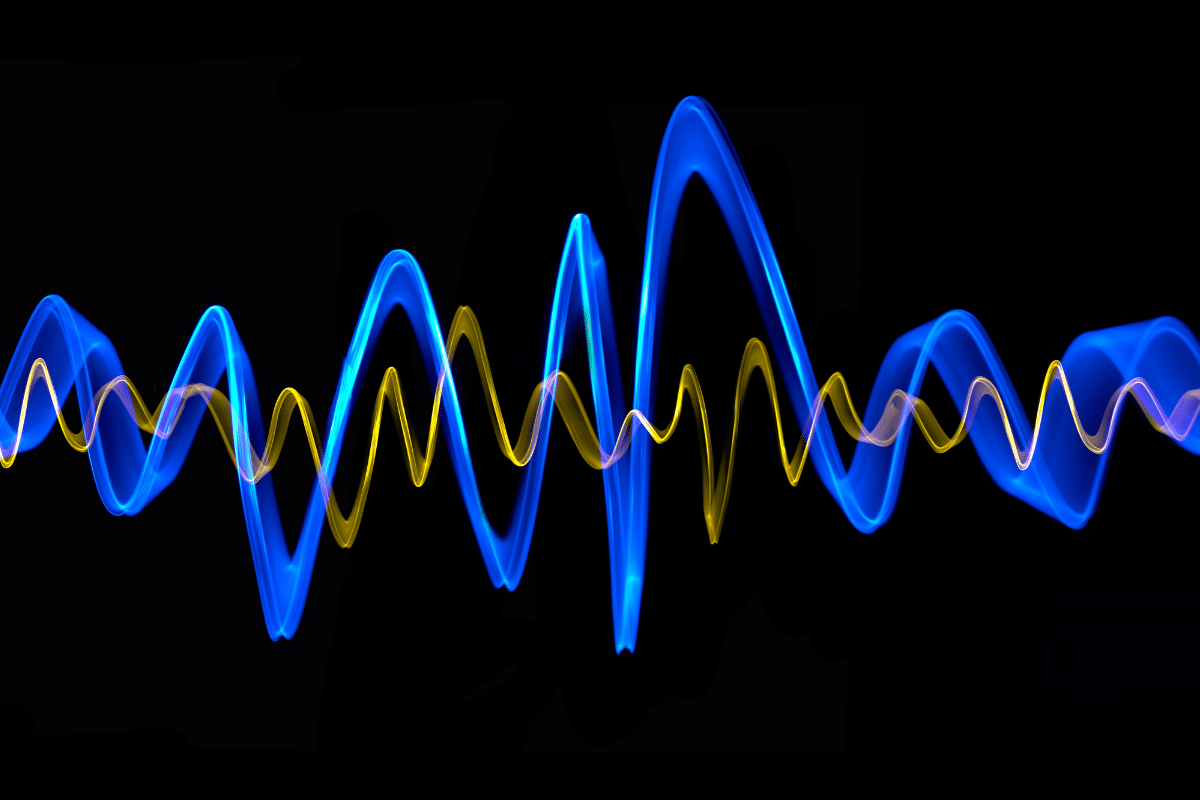What Does Sound Waves Mean?6 min read
Reading Time: 5 minutesSound waves are a type of energy that travels through the air, or any other medium, as a vibration of pressure waves. The higher the pressure, the higher the sound. Sound waves are created by a vibrating object, which pushes the air around it, creating a ripple of pressure.
The speed of sound waves in air is about 343 meters per second (1,236 feet per second), and they can travel through most solids and liquids. Sound waves can be heard when they vibrate the ear drum, and they are what allow us to hear different sounds.
Sound waves are used in a variety of ways, including in communication, sonar, and music. They can also be used to measure the distance to an object, as well as its size and shape.
Table of Contents
What are sound waves?
Sound waves are waves of energy that travel through the air, or any other medium, as a vibration of pressure. The higher the pressure, the higher the sound.
Sound waves are created by something vibrating, like a singer’s vocal cords or a guitar string. When the object vibrates, it pushes and pulls the air around it, creating waves of pressure. These waves travel through the air, or any other medium, until they hit something else and are absorbed or reflected.
The pitch of a sound is determined by how fast the object is vibrating. The higher the frequency, the higher the pitch. The wavelength is the distance between two consecutive peaks in the wave.
Sound waves can be heard when they hit your eardrum and cause it to vibrate. This vibration is turned into electrical signals by the inner ear and sent to the brain, which interprets them as sound.
What is an example of a sound wave?
Sound waves are a type of energy that travels through the air, or any other medium, as a disturbance of the pressure of the medium. They can be created by anything that vibrates, such as a guitar string, a tuning fork, or the vocal cords.
Sound waves are longitudinal waves, which means that the disturbance travels along the length of the wave, pushing and pulling the air particles as it goes. The waves created by a vibrating object, such as a tuning fork, propagate outward in all directions.
The speed of a sound wave depends on the medium it is travelling through. In air, sound waves travel at a speed of about 330 meters per second, or 770 miles per hour.
The pitch of a sound is determined by the frequency of the sound wave. Frequency is measured in hertz, and one hertz is one cycle per second. The higher the frequency of a sound wave, the higher the pitch of the sound.
The amplitude of a sound wave determines the loudness of the sound. Amplitude is measured in decibels, and a sound with a higher amplitude will be louder than a sound with a lower amplitude.
Sound waves can be used to communicate over long distances, as well as to detect objects and measure distances. Sonar, which is used by submarines to detect objects underwater, uses sound waves to create an image of the objects in the surrounding area. Ultrasound, which is used in medical diagnostics, uses sound waves to create images of the inside of the body.

What does sound waves mean for kids?
Sound waves are vibrations that travel through the air, or any other medium, as a series of compressions and expansions. Kids can see sound waves by making a loud noise and watching the ripples it creates in a still pool of water.
The pitch of a sound is determined by how fast the waves are moving. The higher the pitch, the faster the waves. The lower the pitch, the slower the waves.
The loudness of a sound is determined by how big the waves are. The bigger the waves, the louder the sound.
The sound of a voice is affected by the tone of the voice. When someone speaks in a normal tone, the sound waves are emitted evenly. When someone speaks in a high-pitched voice, the sound waves are emitted in a more concentrated way. When someone speaks in a low-pitched voice, the sound waves are emitted in a more diffuse way.
What is sound wave in short answer?
Sound waves are created by vibrations that travel through the air, or any other medium. These vibrations cause the air to move back and forth, creating a wave. The pitch of a sound is determined by how fast the waves are moving. The higher the pitch, the faster the waves are moving.
What causes sound waves?
What are sound waves?
Sound waves are created by vibrations in the air. When an object vibrates, it creates a tiny disturbance in the air. This disturbance travels outward in all directions, creating a sound wave.
What causes sound waves?
The most common source of sound waves is a vibrating object. For example, when you sing, your vocal cords vibrate, creating sound waves. When you speak, the air inside your mouth vibrates, creating sound waves. And when you play a musical instrument, the strings or keys vibrate, creating sound waves.
However, sound waves can also be created artificially. For example, when you speak into a microphone, the sound waves created by your voice are amplified and sent through a speaker.
How do sound waves travel?
Sound waves travel through the air, and can also travel through other materials, such as water or metal. They travel at a speed of about 340 meters per second, or 770 miles per hour.
What affects the sound of a sound wave?
The sound of a sound wave can be affected by a variety of factors, including the:
– Size of the object that created the sound wave
– Material the sound wave travels through
– Temperature of the material the sound wave travels through
– Humidity of the material the sound wave travels through
– Altitude of the material the sound wave travels through
How do sound waves move?
Sound waves are created by vibrations, which create vibrations in the air. The vibrations push the air molecules around them, and as these air molecules bump into other air molecules, they create a wave of movement. This wave of movement travels through the air, and is what we hear as sound.
The speed of a sound wave depends on the temperature and the humidity of the air. The warmer the air, the faster the sound wave will travel. The more humid the air, the slower the sound wave will travel.
Sound waves can be blocked by obstacles, such as walls or mountains. The sound wave will be reflected off these obstacles and will continue on in a new direction. This is why you might not be able to hear someone calling you from across the room, but you can hear them if they come up behind you.
Which best describe the sound wave?
There are three types of sound waves: mechanical, electrical, and pressure. Mechanical waves are created by vibrating objects and travel through the air, while electrical waves are created by a disturbance in an electric field and travel through a medium like wires. Pressure waves are created when a sound source, like a person’s voice, vibrates the air.
The three types of sound waves all have different properties. For example, mechanical waves can be blocked by obstacles, while electrical and pressure waves can’t. Electrical waves can travel through wires and other materials, while pressure waves can’t.
Which type of sound wave is created when you speak?
A pressure wave is created when you speak. This type of wave is created when the air vibrates and pushes against your vocal cords.




